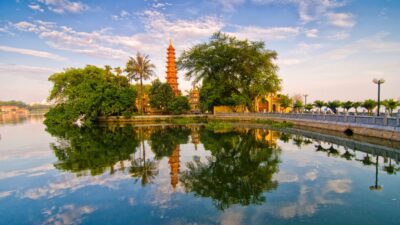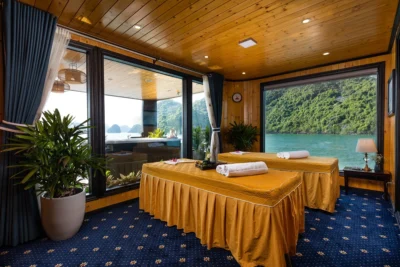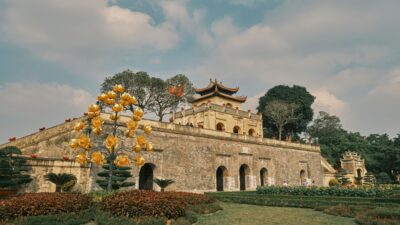Visiting museums in Hanoi is a great way to learn about Vietnam’s history, art and culture while also experiencing the city’s unique architecture and lifestyle. Are you an Indian traveler planning a Vietnam tour and looking to delve deep into the country’s rich heritage? Forget just sightseeing – immerse yourself in the heart of Vietnamese culture through Hanoi’s incredible museums! As the capital city, Hanoi has more museums than any other city in Vietnam, these museums offer a unique and fascinating perspective on the nation’s history, art, and diverse cultures.
At Vietnam Story, we know that understanding the local culture is key to a truly memorable travel experience. That’s why we’ve curated this comprehensive list of the 18 must-visit museums in Hanoi, tailor-made for the interests of Indian tourists like you. Get ready to be captivated by stories of resilience, artistic brilliance, and the vibrant spirit of Vietnam!
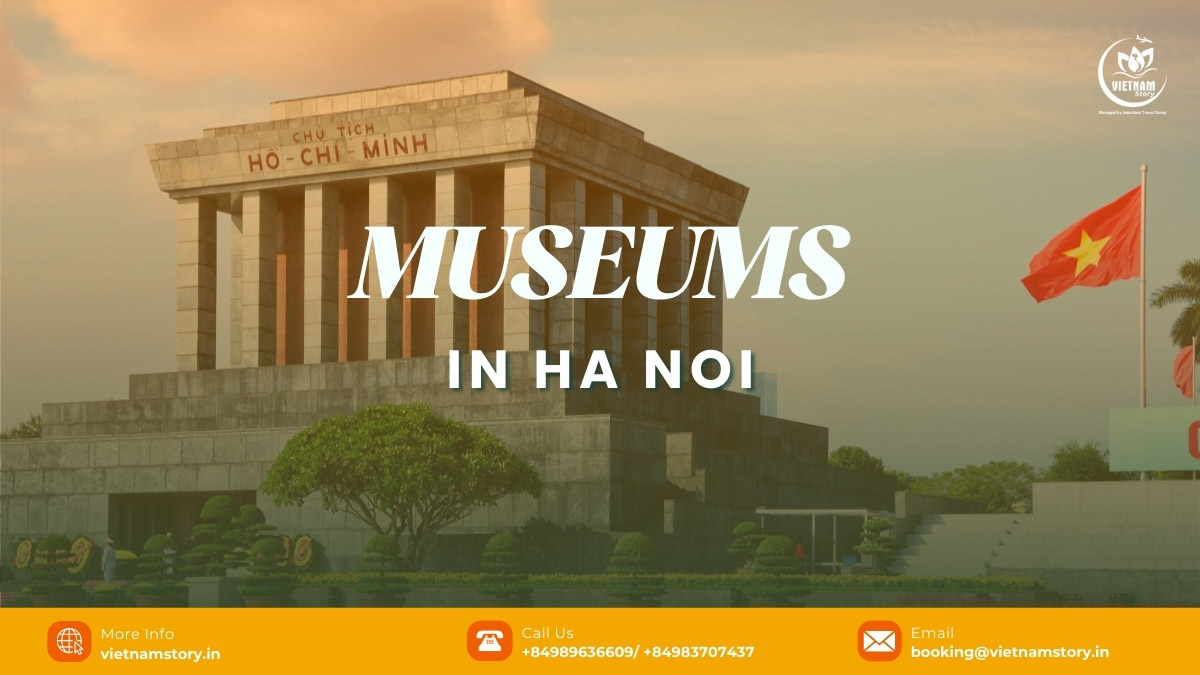
Why Explore Hanoi’s Museums?
Hanoi’s museums offer a diverse landscape of knowledge that caters to a wide array of interests. Whether you are a history enthusiast, an art lover, or simply curious about Vietnamese culture, these historic museums in Ha Noi invite you to delve into the nation’s past and present. The exhibits blend historical narratives with interactive displays, offering compelling insights into the cultural fabric of the city.
As an Indian traveler, visiting these museums in Hanoi will offer deeper insights into:
- Vietnamese History and Culture: Understand Vietnam’s journey through time, from ancient dynasties to the modern era.
- Cultural Similarities and Differences: Discover fascinating parallels and contrasts between Indian and Vietnamese traditions.
- Artistic Heritage: Appreciate the unique forms of Vietnamese art, from ancient sculptures to contemporary paintings.
- Inspiration and Resilience: Learn about the Vietnamese people’s spirit, which resonates with Indian values.
- Amazing Value for Money: Many of the museums in Hanoi are easily affordable.
18 Must-Visit Museums in Hanoi: Top Picks for Indian Tourists
These museums are listed based on popularity and proximity to major attractions, helping you efficiently plan your Vietnam tour.
Ho Chi Minh Museum in Ha noi
- Location: No. 19, Ngoc Ha Street, Ba Dinh District
- Opening Hours: 8 AM – 12 PM | 2 PM – 4:30 PM (Closed Mondays & Fridays)
- Entrance Fee: VND 40,000 (Approx. INR 130)

This iconic museum is a must-see to understand modern Vietnam. The museum building symbolizes a lotus flower, representing President Ho Chi Minh’s simple yet noble life. Explore numerous photographs, documents, and historical relics related to his revolutionary journey. Ho Chi Minh’s philosophy resonates with Indian ideals of independence and social justice. The museum’s architecture is unique as well.
B-52 Victory Museum
- Location: No. 157, Doi Can Street, Ba Dinh District
- Opening Hours: 8 AM – 11 AM | 1:30 PM – 4:30 PM (Closed Mondays & Fridays)
- Entrance Fee: Free

This unique war museum is dedicated solely to the exhibition of B-52 aircraft, commemorating the “Hanoi – Dien Bien Phu in the Air” victory. Discover various weapons, equipment, a shot-down B-52 aircraft, and photos documenting Hanoi’s armed forces during this battle. The war, like India’s own struggles for independence, showcases broader themes of self-determination and resilience.
Vietnam Military History Museum
- Location: No. 28A, Dien Bien Phu Street, Ba Dinh District
- Opening Hours: 8 AM – 11:30 AM | 1 PM – 4:30 PM (Closed Mondays & Fridays)
- Entrance Fee: VND 30,000 (Approx. INR 100)

For visitors interested in Vietnam’s military history, this museum is a highlight. The interior displays 4,000 artifacts depicting the country’s military development from ancient eras to modern times, including key battles. The outdoor exhibition presents 200 artifacts, showcasing weapons used by the Vietnamese military and those captured from the enemy. Don’t miss climbing the Hanoi Flag Tower for panoramic views. The museum will eventually be moving its location to the Tay Mo district.
Hoa Lo Prison Museum
- Location: 01 Hoa Lo Street, Hoan Kiem District
- Opening Hours: 8 AM – 5 PM (Daily)
- Entrance Fee: VND 50,000 (Approx. INR 165)
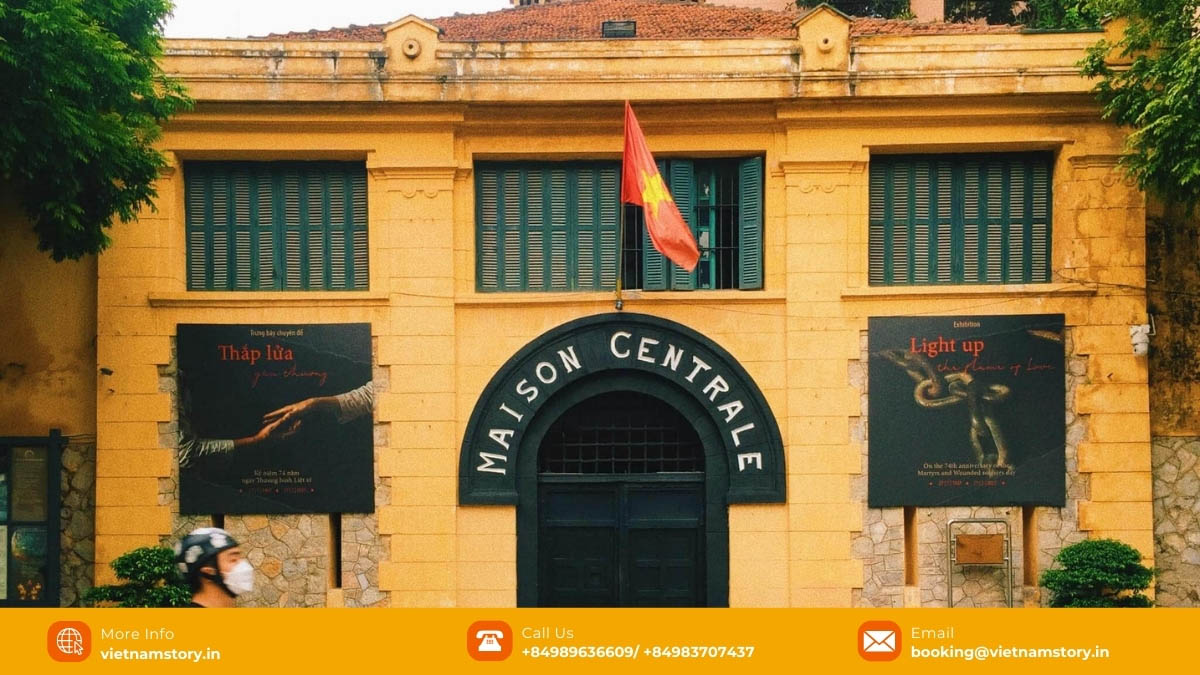
The infamous “Hanoi Hilton”, this former prison tells a grim but important story of Vietnamese resilience. See relics like the French guillotine, iron shackles, and torture tools, but also learn about the bravery of revolutionaries. While potentially sensitive, Hoa Lo provides a crucial perspective on the Vietnamese fight for independence and national identity. Many visitors dress up and pose for instagram photos.
Vietnam National Museum of History
- Location: No. 1, Trang Tien Street & No. 216, Tran Quang Khai Street, Hoan Kiem District (Two Buildings)
- Opening Hours: 8 AM – 12 PM | 1:30 PM – 5 PM (Closed Mondays)
- Entrance Fee: VND 40,000 (Approx. INR 130)
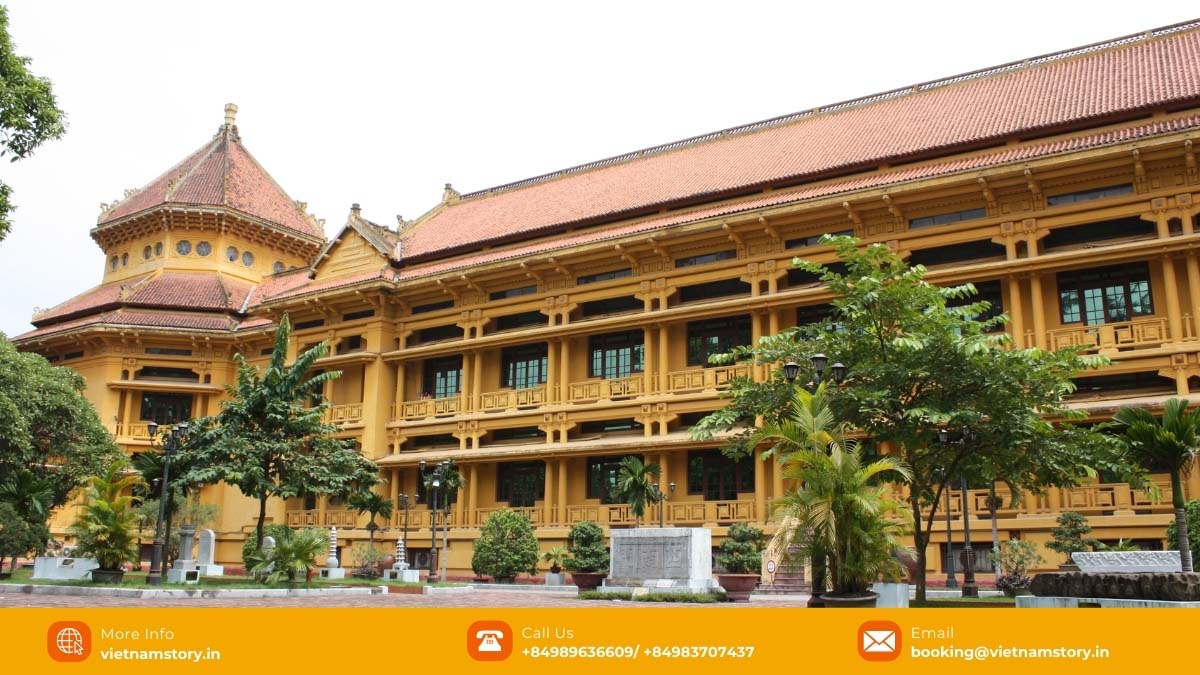
The Vietnam National Museum of History is an essential stop for anyone interested in exploring a top museums in Ha Noi. This museum provides an extensive collection of artifacts spanning from prehistoric times to the modern era. Its well-curated exhibits present a chronological narrative of Vietnam’s cultural evolution, resilience, and journey to independence.
This museum stands out with its impressive French architecture and extensive collection of artifacts. Established by merging the Vietnam Museum of History and the Vietnam Museum of Revolution, it preserves approximately 200,000 artifacts, including ancient ceramics, bronze items, stone sculptures, and items related to the Vietnamese revolution. The Dong Son drum, discovered in Thanh Hoa Province is a well-known national symbol.
Museum of Armored Forces
- Location: No. 108, Hoang Quoc Viet Street, Cau Giay District
- Opening Hours: 8 AM – 11 AM | 2 PM – 4 PM (closed on Friday)

The museum is a military museums where valuable artifacts are exhibited. You will gain a deeper understanding of the challenges faced by Vietnamese people. The museum also serves as a gathering place for veterans.
Air Force and Air Defence Museum in Hanoi Vietnam
- Location: No. 173C, Truong Chinh Street, Thanh Xuan District
- Opening Hours: 8 AM – 11 AM | 1 PM – 4 PM (closed on Friday)

Here, you will find many photos and documents for understanding the development of Vietnamese Air Force. The museum also introduces the international cooperation in space flight in 1980, where Vietnamese pilot Pham Tuan became the first Vietnamese in space.
Hanoi Police Museum
- Location: No. 1, Tran Binh Trong Street, Hoan Kiem District
- Opening Hours: 8 AM – 4:30 PM (closed on Monday and Sunday)

You can explore various modern firearms, equipment, and memorabilia of soldiers. Many valuable photos and documents are on display, including propaganda materials from the Viet Minh Honorary Unit, relics such as anti-tank guns, and touching stories of exemplary police officers.
Vietnam Museum of Ethnology
- Location: Nguyen Van Huyen Street, Cau Giay District
- Opening Hours: 8:30 AM – 5:30 PM (Closed Mondays)
- Entrance Fee: VND 40,000 (Approx. INR 130)

A must-visit to explore the cultural diversity of ethnic groups in Vietnam! The museum building exhibits hundreds of thousands of artifacts and showcases the cultural traits of the 54 ethnic groups in Vietnam. As India also has a very ethnically diverse background, this might particularly appeal to Indian tourists.
The Vietnam Museum of Ethnology offers an immersive exploration into the cultural diversity of Vietnam. Distinguished among cultural museums in Ha Noi, this institution showcases the rich traditions, customs, and lifestyles of the country’s various ethnic groups.
Vietnam National Fine Arts Museum
- Location: No. 66, Nguyen Thai Hoc Street, Ba Dinh District
- Opening Hours: 8:30 AM – 5 PM (Daily)
- Entrance Fee: VND 40,000 (Approx. INR 130)
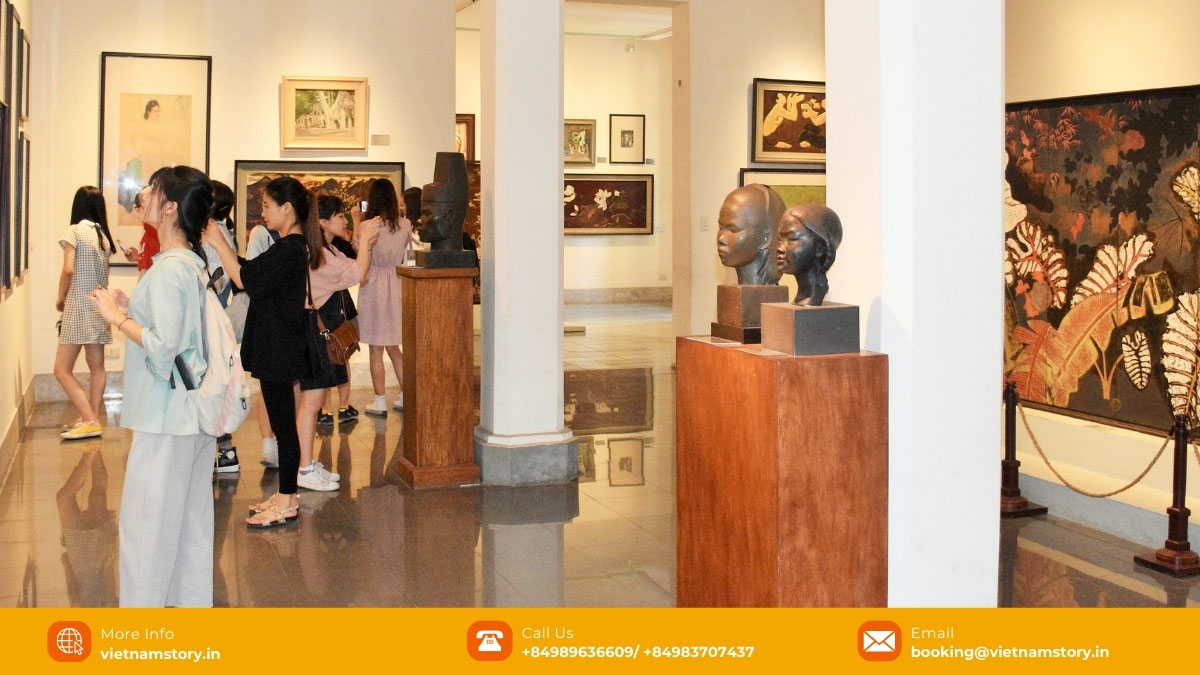
For art aficionados, the Vietnam Fine Arts Museum is a treasure trove of creative expression. Displaying a range of artworks from ancient ceramics to contemporary masterpieces, this museum stands as a testament to the vibrant artistic legacy of Vietnam—a must-visit for any museum in Ha Noi.
This museum preserves and promotes the cultural and artistic heritage of Vietnam, featuring paintings and sculptures from prehistoric to contemporary art. The museum also hosts art exhibitions and culinary workshops. You can relax at the coffee shop that is inside.
Vietnamese Women’s Museum
- Location: No. 36, Ly Thuong Kiet Street, Hoan Kiem District
- Opening Hours: 8 AM – 5 PM (Daily)
- Entrance Fee: VND 40,000 (Approx. INR 130)

Enhance your understanding of the history and heritage of Vietnamese women at this museum. Showcasing over 40,000 artifacts through its exhibitions, the museum covers three main themes: Women in Family; Women in History; and Women’s Costumes. As the country progresses, the museum also organizes themed exhibitions, to raise awareness of gender equality issues.
Museum of Literature Hanoi
- Location: Alley 275, Au Co Street, Tay Ho District
- Opening Hours: 8:30 AM – 12 PM | 1:30 PM – 5 PM
Visitors can find many valuable materials and stories related to famous writers such as Nguyen Du, Nguyen Trai, Nam Cao, Xuan Dieu, To Huu, etc. Here, you will explore the outdoor exhibition which features ceramic sculptures and statues of literary figures, recreating the folk literature of Vietnam.
Bat Trang Pottery Museum
- Location: Hamlet 5, Bat Trang Pottery Village, Gia Lam District
- Opening Hours: 8:30 AM – 5:30 PM (Weekdays), 8:30 AM – 6 PM (Weekends)
- Entrance Fee: Varies depending on activity (approx. INR 50-200 for pottery classes)
The museum has six floors, offering various experiences for visitors. You will be able to experience pottery craftsmanship.
Hanoi Museum
- Location: Pham Hung Street, Nam Tu Liem District
- Opening Hours: 8 AM – 11:30 AM | 1:30 PM – 5 PM (closed on Monday)
Some valuable collections include bronze drums, ceramics, war relics, and national treasures. The museum also features specialized exhibition areas and outdoor exhibition areas, helping visitors better understand the history of Hanoi.
Geological Museum of Vietnam
- Location: No. 6, Pham Ngu Lao Street, Hoan Kiem District
- Opening Hours: 8 AM – 5 PM (closed on Saturday and Sunday)
The Geological Museum of Vietnam is where the largest collection of geological specimens in Vietnam is preserved, dinosaur bone unearthed in Laos in 1935, aragonite crystal, and fossils from the Jurassic Period.
Vietnam National Museum of Nature
- Location: No. 18, Hoang Quoc Viet Street, Cau Giay District
- Opening Hours: 8:30 AM – 11 AM | 1:30 PM – 4:30 PM (closed from Monday to Wednesday)
With over 1,400 unique specimens, recreates the evolution of life over 3.6 billion years, visitors can admire the diverse world of life, with fossils from four geological periods.
Planning Your Museum Visits: A Guide for Indian Travelers
For our Indian visitors travel to Ha Noi, experiencing a museum in Ha Noi can be both enlightening and enjoyable. Here are some tailored tips to ensure a smooth and memorable visit:
- Getting Around: Most museums in Hanoi are easily accessible. Walk, use taxis, or motorbikes via the Grab app.
- Practical Tips: Check opening hours, entrance fees, audio guides, dress respectfully, allocate time, and enjoy on-site cafes.
- Visa and travel arrangements: Ensure that your travel documents are in order. Many tour packages available on vietnamstory.in include visa assistance and local transportation.
- Language support: Most major museums offer exhibits in English, and some even provide guides who speak Hindi or other Indian languages.
- Local cuisine: After a day of exploring museums, treat yourself to Hanoi’s renowned street food and local restaurants to complete your cultural experience.
- Cultural etiquette: Respect local customs by dressing modestly, especially at solemn sites like the Ho Chi Minh Mausoleum..
Conclusion
Exploring the museums in Hanoi offers a gateway to understanding Vietnam’s soul, providing enriching experiences that resonate with Indian travelers. Plan your Vietnam tour with Vietnam Story and unlock the cultural treasures of Hanoi!
Ready to begin your Vietnamese adventure? Visit vietnamstory.in today and let us help you create the perfect Vietnam tour package, tailored to your interests and preferences. Don’t miss out on this amazing trip!




